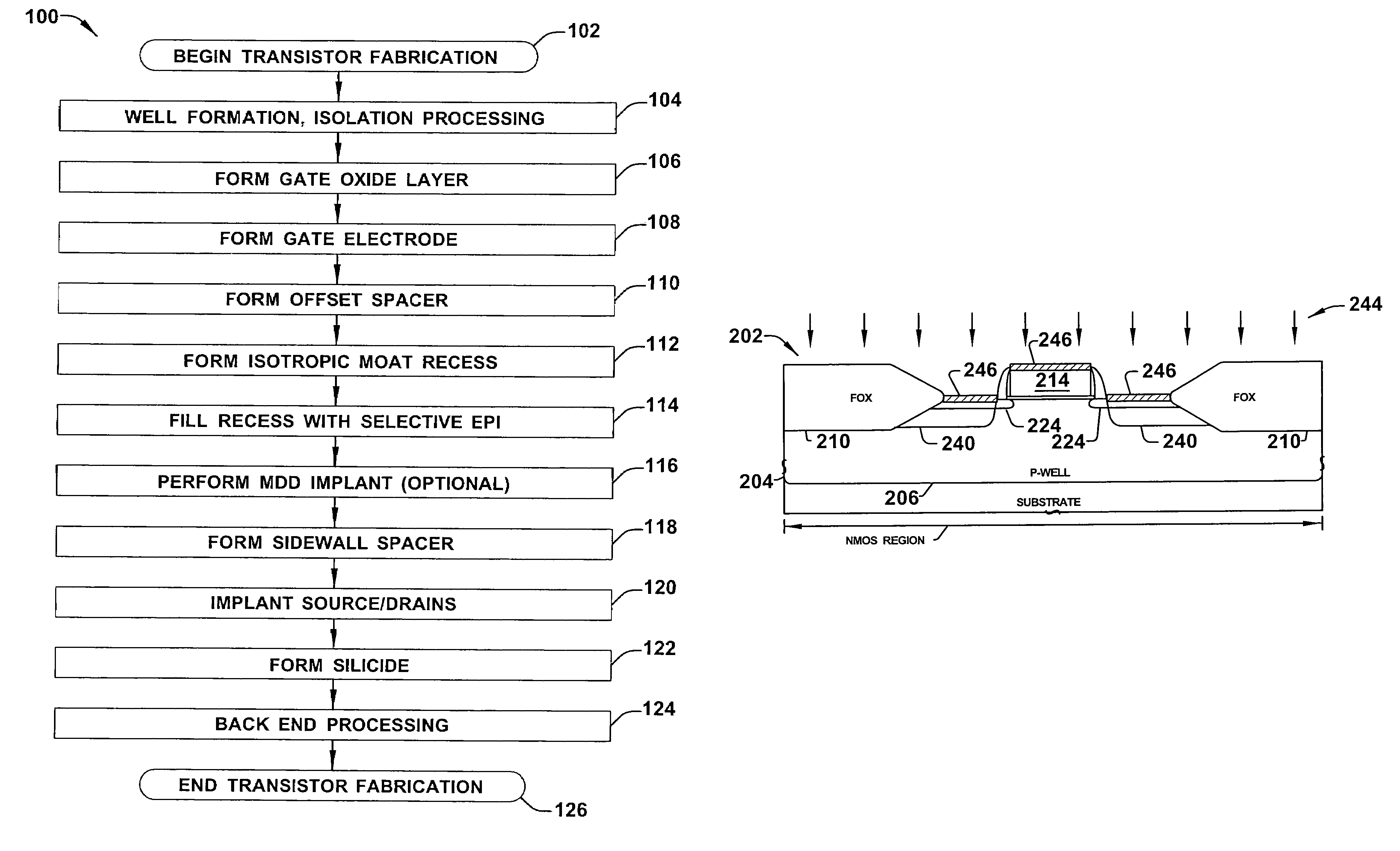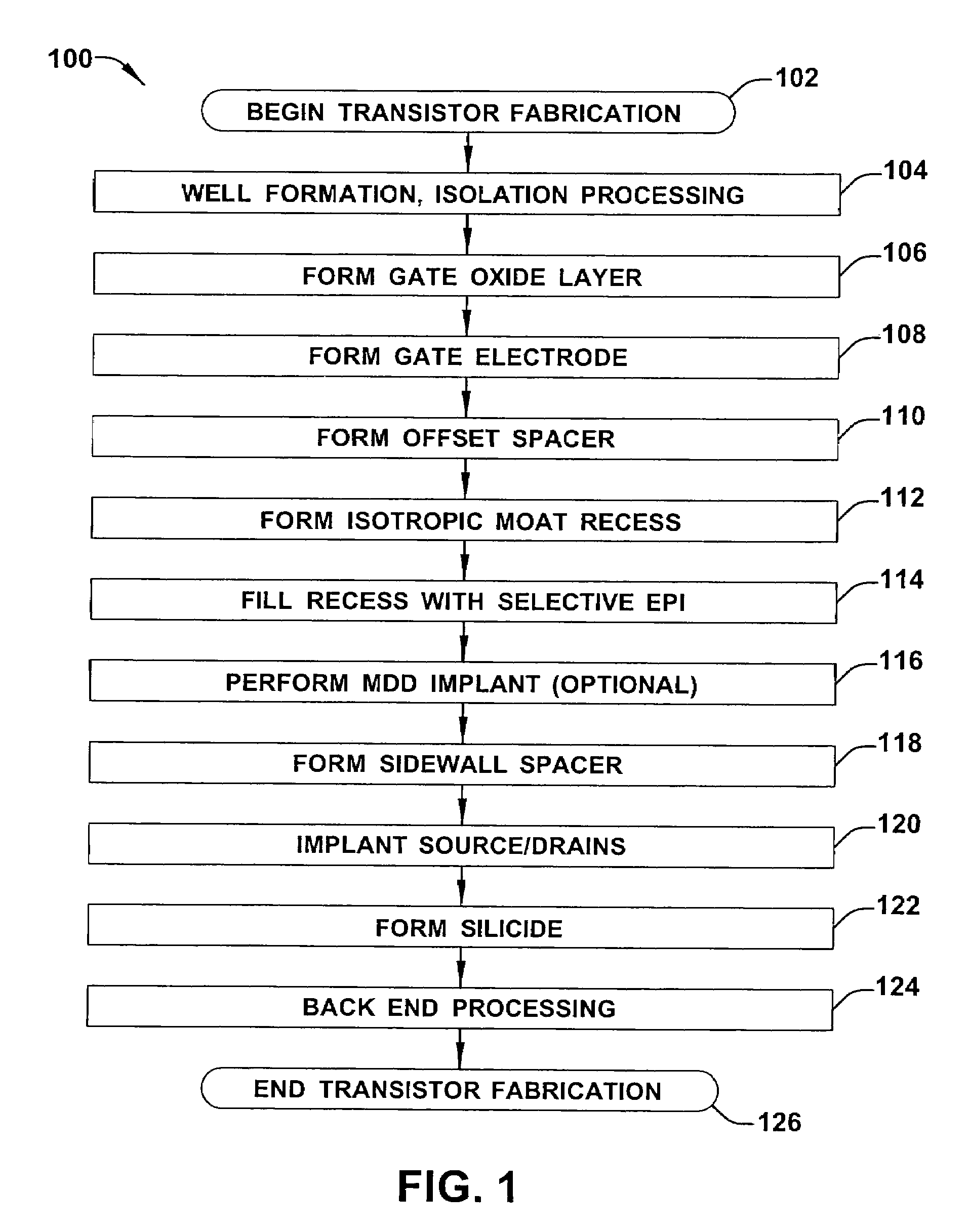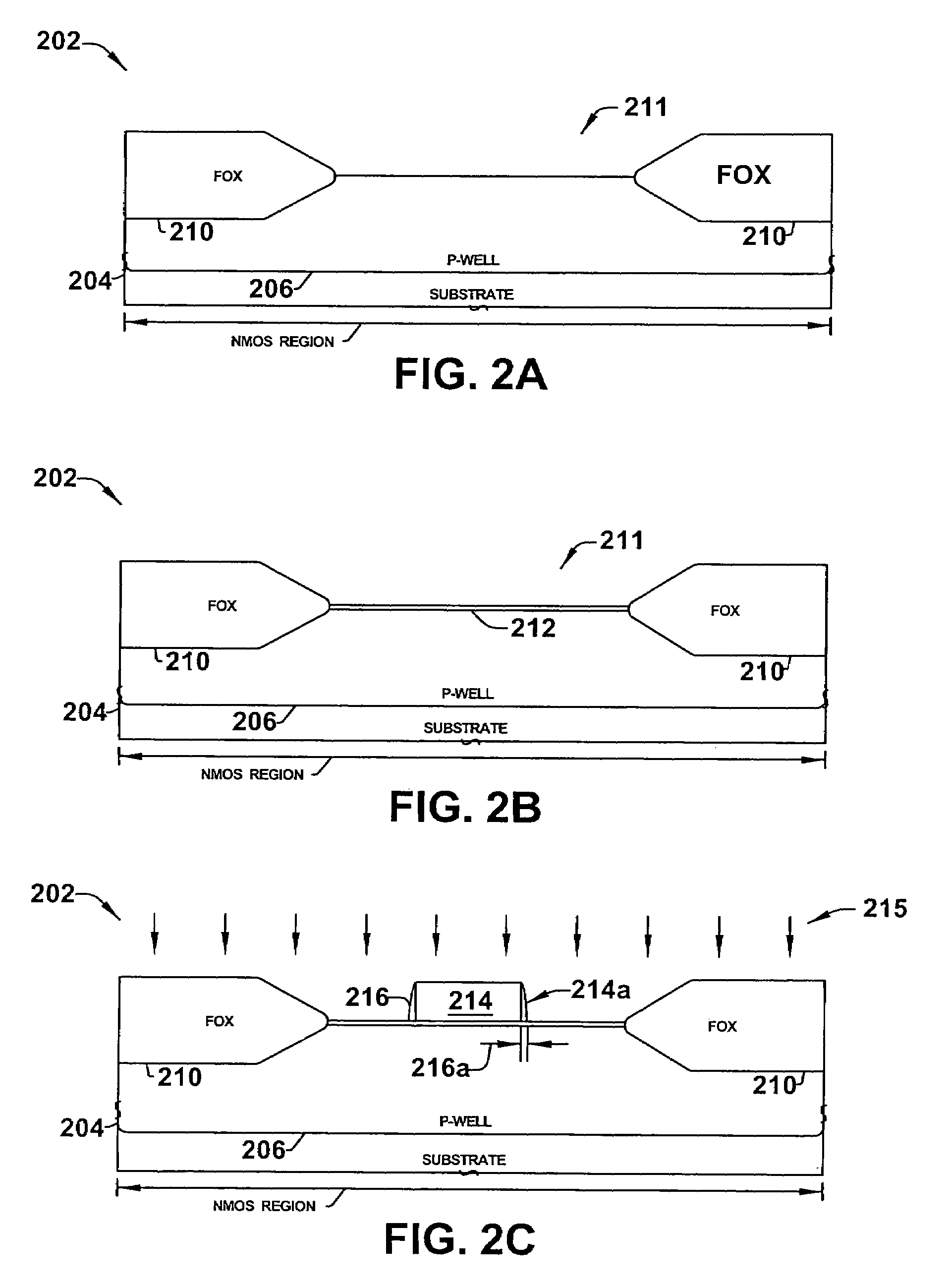Increased drive current by isotropic recess etch
a technology of isotropic recess and drive current, which is applied in the direction of semiconductor devices, electrical devices, transistors, etc., can solve the problems of increasing scattering, reducing the mobility advantages associated with strained channels, and reducing the relaxed sige layer. achieve the effect of improving carrier mobility and mobility
- Summary
- Abstract
- Description
- Claims
- Application Information
AI Technical Summary
Benefits of technology
Problems solved by technology
Method used
Image
Examples
Embodiment Construction
[0017]One or more implementations of the present invention will now be described with reference to the attached drawings, wherein like reference numerals are used to refer to like elements throughout, and wherein the illustrated structures are not necessarily drawn to scale. The invention provides transistor structures and methods in which transistor mobility is improved while minimizing defects heretofore associated with conventional strained silicon device solutions.
[0018]Referring now to FIGS. 1 and 2A–2G, further aspects of the invention relate to methods of fabricating integrated circuits, wherein FIG. 1 illustrates an exemplary method 100 in accordance with the invention, and FIGS. 2A–2G illustrate the exemplary transistor device at various stages of fabrication in accordance with the invention. While the exemplary method 100 is illustrated and described below as a series of acts or events, it will be appreciated that the present invention is not limited by the illustrated ord...
PUM
 Login to View More
Login to View More Abstract
Description
Claims
Application Information
 Login to View More
Login to View More - R&D
- Intellectual Property
- Life Sciences
- Materials
- Tech Scout
- Unparalleled Data Quality
- Higher Quality Content
- 60% Fewer Hallucinations
Browse by: Latest US Patents, China's latest patents, Technical Efficacy Thesaurus, Application Domain, Technology Topic, Popular Technical Reports.
© 2025 PatSnap. All rights reserved.Legal|Privacy policy|Modern Slavery Act Transparency Statement|Sitemap|About US| Contact US: help@patsnap.com



